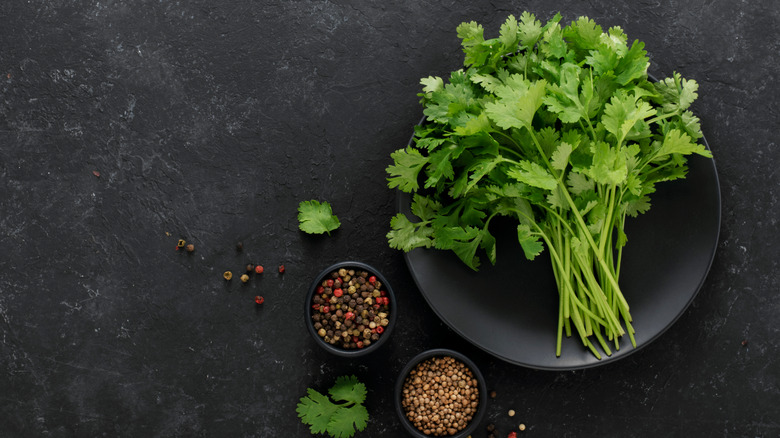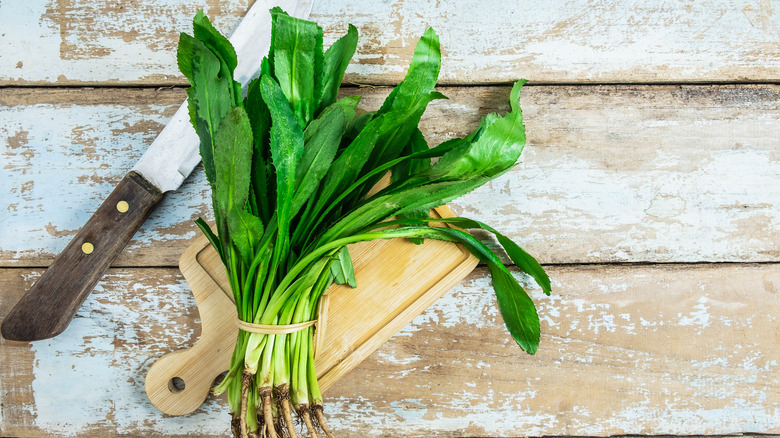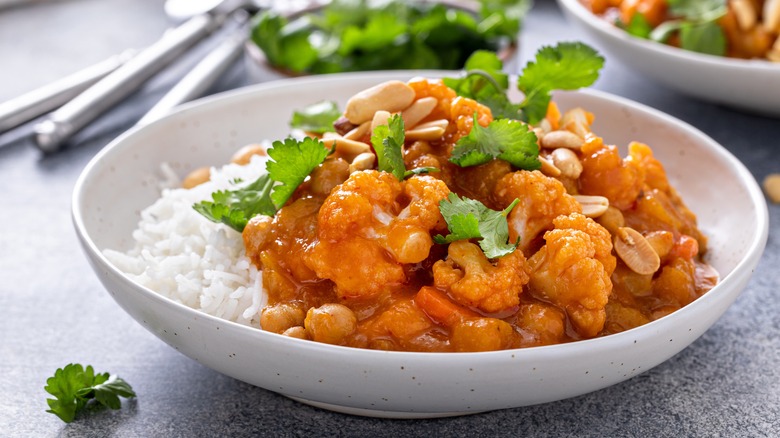What Is The Difference Between Cilantro And Culantro?
Botanically classified as Coriandrum sativum, cilantro's flat green leaves are sometimes called coriander — a term that can refer to either the dried seeds of the plant or the leaves and stalks — or, less confusingly, Chinese parsley. Then there's culantro, which, despite sounding like a hasty misspelling of cilantro, is a distinct herb, botanically classified as Eryngium foetidum. Cilantro and culantro both belong to the Apiaceae family, which includes parsley and carrots, making them cousins, but not identical.
Cilantro is an annual plant, meaning it lives for only one year, while culantro is a biennial, lasting for two years. Additionally, while Cilantro originates from the Mediterranean, culantro is native to the Americas and the West Indies, known by various names: cilantro de hoja ancha, or broadleaf cilantro, in Spanish; chandon beni in the Caribbean; ngo gai in Vietnamese; and recao in Puerto Rico and the Dominican Republic. Cilantro and culantro differ in appearance, aroma, and flavor, which influences how they are used in cooking.
Cilantro and culantro don't look, taste, or smell the same
The most obvious difference between cilantro and culantro lies in their appearance. Cilantro has rounded, feather-like leaves that are soft and scalloped, while culantro's long leaves are thick, tough, and serrated around the edges. Culantro is also darker and glossier than cilantro, and grows on plants that can reach up to two feet tall, larger than those of cilantro. However, they also differ in their respective flavors and aromas.
Cilantro possesses a bright, citrus-like smell that can be easily overpowered by stronger fragrances, whereas culantro has an earthy, bitter aroma reminiscent of cilantro, but far more intense and pungent. Similarly, their flavors differ: Cilantro offers a gentle, citrusy taste with a touch of sweetness, while culantro has a stronger, more pronounced pungency. Therefore, even though one could substitute culantro with cilantro, or vice versa, a much greater quantity of cilantro would be required to match the robust complexity of culantro.
Culinary uses for cilantro and culantro
Cilantro's lighter flavor and aroma, as compared to culantro's robust pungency, also influence how the two herbs are used in cooking. Cilantro's delicate citrus and sweet flavors are best showcased when the herb is used raw, making it a popular garnish for soups and salads. Conversely, culantro's stronger flavor can endure high-heat cooking, although its robustness may diminish with prolonged cooking. It is typically added at the beginning of the cooking process to allow its full flavor to develop.
Both cilantro and culantro are featured in cuisines worldwide. Cilantro's milder flavor is favored in Mexican cuisine for tacos, salsas, and guacamole, as well as in Europe and parts of Asia where it garnishes curries or is blended into chutneys. While not as globally prevalent as cilantro, culantro is an essential herb in Caribbean and Latin American dishes, as well as in certain Asian countries like Vietnam. It is used in Caribbean and South American stews and sofrito, and occasionally as a garnish in Vietnamese pho.
Regardless of the regional cuisine, when cooking with cilantro and culantro at home, consider the strength of their flavors. Stick to cilantro for a lighter taste, but choose culantro when a bitter, pungent, and stronger flavor is desired.



